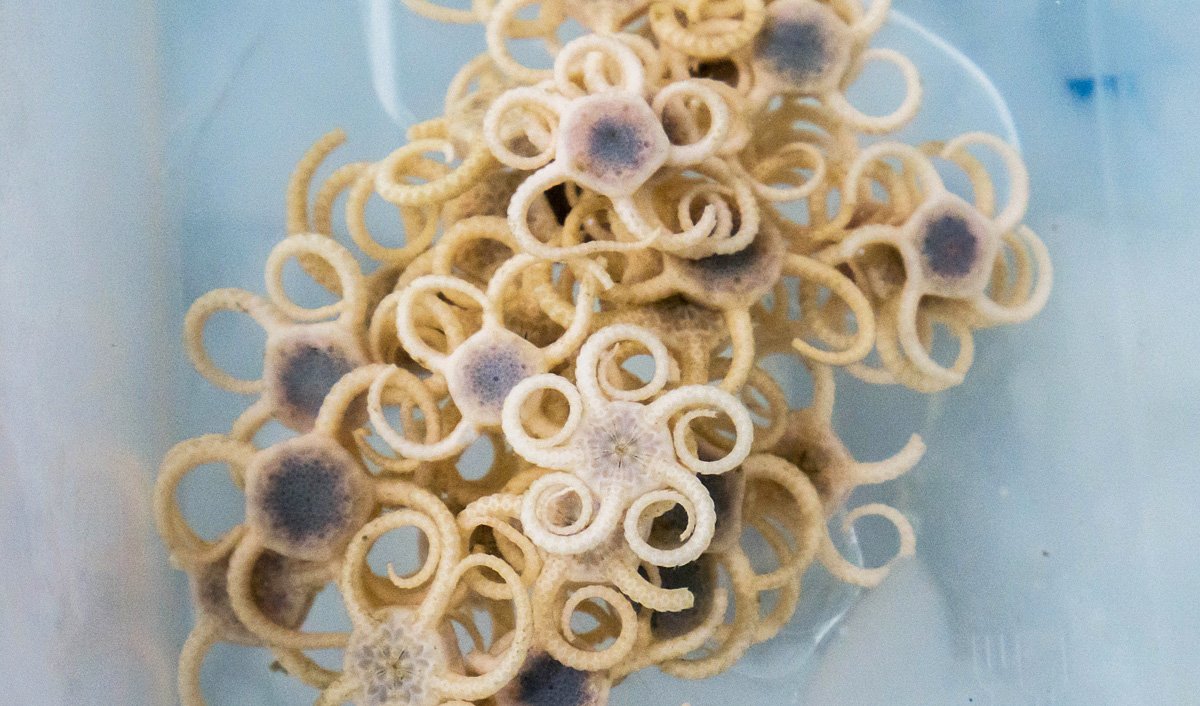Brittle stars: the little-known stars of the sea

SCIENTISTS RETURNING FROM a Museums Victoria-led 31-day deep sea voyage have shared their discoveries, introducing us to some of the most frightening looking creatures imaginable.
While red spiny crabs, flesh eating crustaceans and zombie worms, found in the remains of deceased whales, are interesting, the unique beauty of brittle stars was the focus for Tim O’Hara, a Senior Curator of Marine Invertebrates and Chief Scientist of the Sampling the Abyss Voyage, during the month-long trip.
The brittle star has inhabited oceans for approximately 480 million years, covering large portions of the ocean floor.
“There are 2200 described species. But we are discovering with DNA that lots of these ‘species’ are actually groups of very similar animals, so it is likely that the final number will be more than 10 000 species,” Tim explained on the National Environmental Science Programme (NESP) blog, which kept online audiences updated on the findings from the voyage.
The brittle star shares common traits with starfish, sea urchins, sea cucumbers and feather stars, all of which have tube feet, which help these creatures to catch their prey and burrow into mud.
The shape and size of the brittle star is dependent upon what part of the ocean they inhabit, but they do have a similar look to starfish.

This cute and curly confection of brittle-stars surfaced towards the end of the RV Investigator voyage. Amphiophiura paraconcava was first described from a seamount in the Pacific Ocean. (Image Credit: Asher Flatt)
The creature has five arms that are short and curly, in order to form a tough loop to trap small prey in deeper oceans, or they are sticky and winding, like a fly trap, when inhabiting shallow waters, Tim explained to Australian Geographic.
When they are not feeding on small shrimp or squid, they hide under rocks, their arms flared out from underneath.
In shallow, sun-exposed waters the brittle star camouflages itself by turning its pigments to brown, creamy colours that match the ocean floor.
In deeper waters, the star turns red or orange, as these colours appear black in waters devoid of sun.
The brittle stars gets its name from the way its skins dries and becomes very easily broken. However, its anatomy shouldn’t be under estimated as basic; the star is known for its bioluminescent tendencies.

A fluorescing brittle-star, one of many bioluminescent deep-sea animals photographed on the RV Investigator. (Image Credit: Jerome Mallefet)
Tim said that while other marine life may use light to attract a mate, brittle stars don’t have eyes, so their light has a different function.
“They seem to glow to avoid predators. They can drop a bit of their arm off, like a skink can drop off a tail. When they drop part of their arm, it flashes so the predator goes for the arm piece, while the rest of the animal escapes.”
He said the other strategy adopted by the star can be likened to our avoidance of red berries.
“The other strategy has to do with the red colour of poison berries, advertising that it’s poisonous. On land when things are red you know not to touch them. After the fish get a spark of light, they can associate that with a bad taste. They won’t go for things that produce light after that. They learn not to.”
The traits of the brittle stars are fascinating enough, but the creatures are also being used to help our understanding of the ocean’s history.
“I like seeing what group they belong to, how they feed and how they evolve. I use them as a way of mapping the light of the ocean. Because they’re everywhere in the deep sea, right up to Antarctica, to the Poles, to shallow water to trenches, they’re a really good way of understanding how the oceans have evolved. So as well as being interesting in their own right, they’re also data.”

Lupita Bribiesca-Contreras, Tim O’Hara and Dianne Bray of Museums Victoria inspect brittle-stars caught on the Investigator. Lupita is a PhD candidate with the University of Melbourne and Museums Victoria, and is studying brittle-star evolution. (Image Credit: Asher Flatt)
READ MORE:




